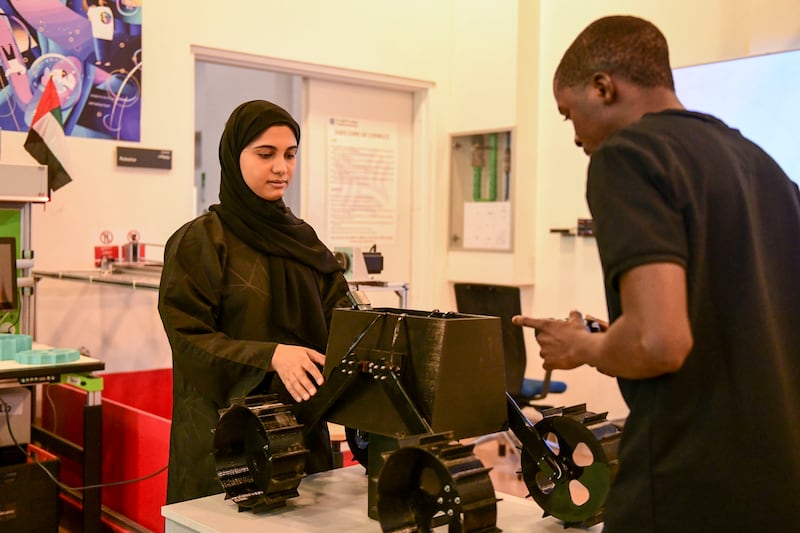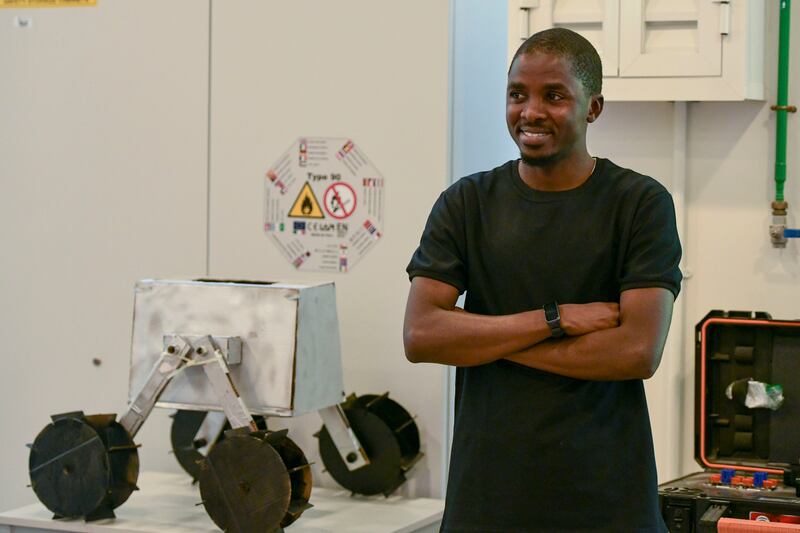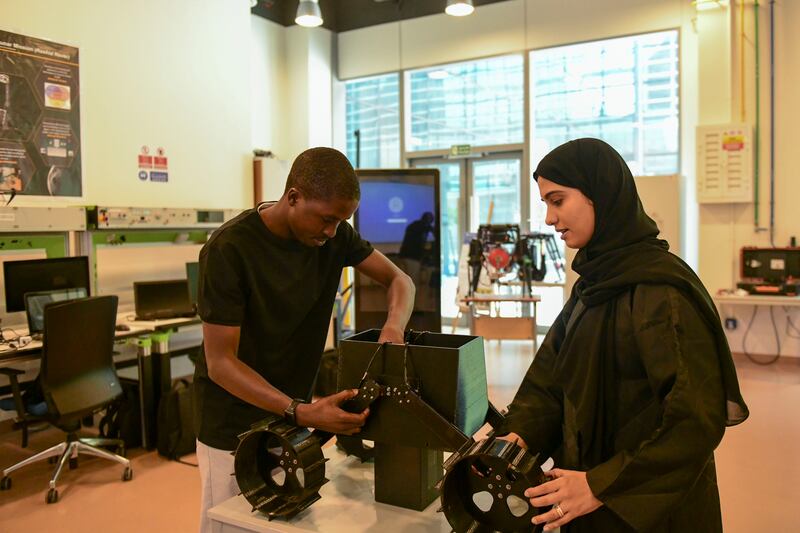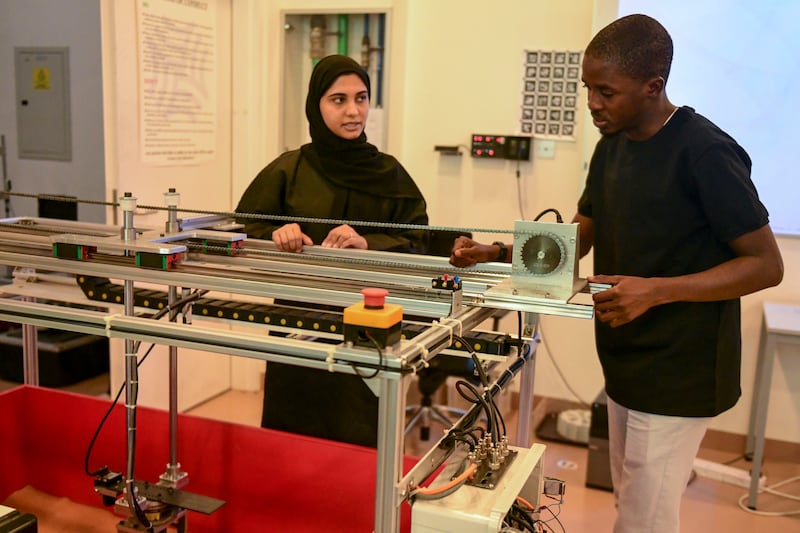Students at Khalifa University in Abu Dhabi are building a lunar rover that could be part of the UAE’s next Moon mission.
The students were given the task of designing a rover that can autonomously navigate the unpredictable terrain of the lunar surface and travel at fast speeds.
The UAE plans to launch a number of lunar rovers in the coming years as part of its long-term Moon exploration programme.
The Rashid rover, which weighs about 10 kilograms, is first in line and is scheduled for launch from Florida’s Kennedy Space Centre, with a launch window starting in early November.
But, the Mohammed bin Rashid Space Centre is already looking for new rover ideas for its next Moon mission, with one that could take place in 2024 and another in 2026.
Mubarak Yakubu, from Nigeria, and Ruqayyah Ahmed Al Hammadi, an Emirati, who are both pursuing doctorates at the university, spoke to The National about the small rover prototype they and their peers are developing.
Mr Yakubu, 30, said he has been working on the design of the four-wheel rover, including making sure it can journey through the harsh lunar terrain autonomously using adaptive locomotives — characteristics that will allow it adapt to different environmental features.
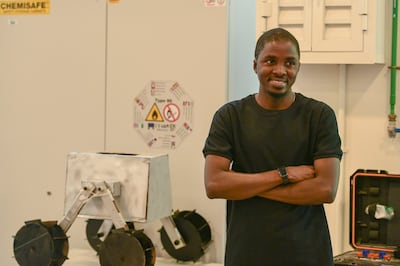
“We need to get the robot to adapt well with the features of the lunar surface in order to get the robust stability required for the mission,” he said.
“We have carried out a lot of simulation runs and we’ve seen that it performing to our expectations.”
The team is also trying to figure out a way to decrease the time it takes to send messages to and receive replies from the rover.
Because of the distance between the Earth and the Moon, there is typically a 2.56-second communications delay.
“We are developing an algorithm that can bring down the delay to 0.9 to 1.5 seconds,” said Mr Yakubu.
The rover would also have neuromorphic vision sensors, circuits that are designed to help the robot “see better” in space.
Ms Al Hammadi, 25, is working on a vision camera that will help the robot travel on the lunar soil without getting stuck.
“I’m building a test rig, which is helping test the wheel-soil interaction and dynamics,” she said.
“We are also using a vision camera to characterise soil, which will help the rover know if the soil is loose or not.”
Timelapse footage shows how the UAE's lunar rover was built
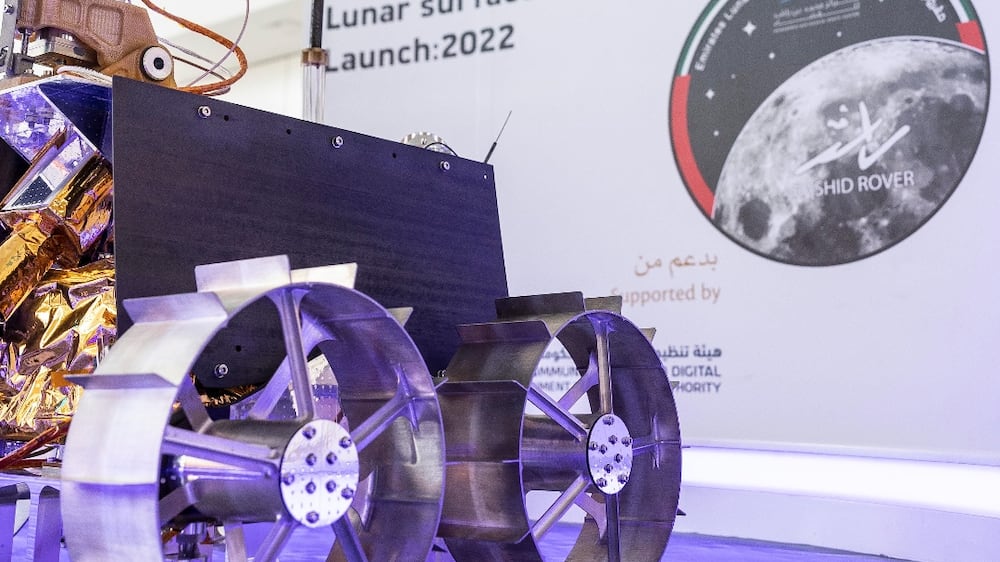
She said some previous rovers by other space agencies have had limited capabilities, such as a low travel distance, because of the Moon's rugged terrain.
China’s Yutu-2 rover, for example, discovered that the Moon’s far side has sticky soil after the dirt stuck to its back wheels.
The near side, however, is a more stable for rovers, though it is still rugged and filled with craters.
“The main aim of our project is to increase the traverse distance of the rover,” said Ms Al Hammadi.
“Our rover has adaptive locomotion in its design, so it can adapt to any inclination and obstacle.”
The students did not reveal any tech specifications, but for some perspective, the Rashid rover can climb over obstacles up to 10 centimetres tall and descend a 20-degree slope, at speeds of 10cm per second.
Khalifa University’s rover needs to be more advanced than that.
If the space centre likes the students’ design, the rover could be selected for the country’s next Moon mission.
Ms Al Hammadi, who has also worked on CubeSats, said it would be a huge boost for her career.
“This would give me incredible experience in how space missions are carried out,” she said.
